
A mudlark uses a torch to look for items on the bank of the River Thames in London, Britain June 06, 2016. Mudlarking is believed to trace its origins to the 18th and 19th century, when scavengers searched the Thames' shores for items to sell. These days, history and archaeology fans are the ones hoping to find old relics such as coins, ceramics, artifacts or everyday items from across centuries. They wait for the low tide and then scour specific areas of exposed shores. "If you're in a field you could be out all day long, with the river you're restricted to about two or three hours," mudlark Nick Stevens said. While many just use the naked eye for their searches, others rely on metal detectors for which a permit from the Port of London Authority is needed. Digging also requires consent. The select Society of Thames Mudlarks counts just a few dozen members, who have the necessary licences and can access restricted areas along the river. Collaborating with the Museum of London, the mudlarks record their finds with the Portable Antiquities Scheme. Any item over 300 years old must be recorded. (Photo by Neil Hall/Reuters)
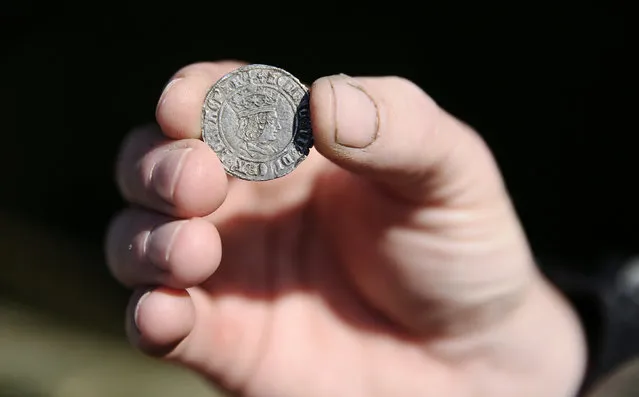
A mudlark shows a Henry VII coin that he excavated from the River Thames in London, Britain May 23, 2016. (Photo by Neil Hall/Reuters)
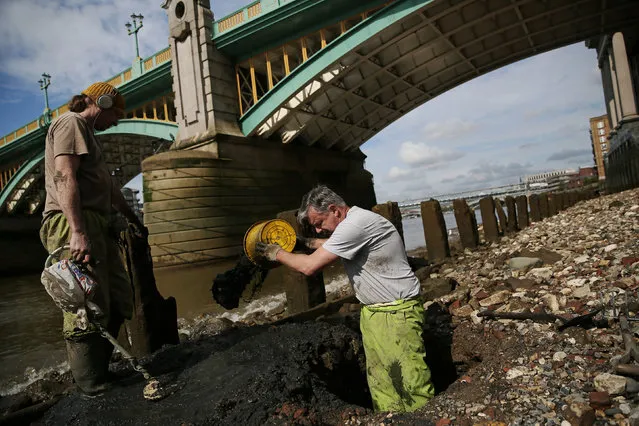
Mudlarks Andy Johansen and Ian Smith dig holes as they look for objects under Southwark Bridge on the bank of the River Thames in London, Britain May 22, 2016. (Photo by Neil Hall/Reuters)
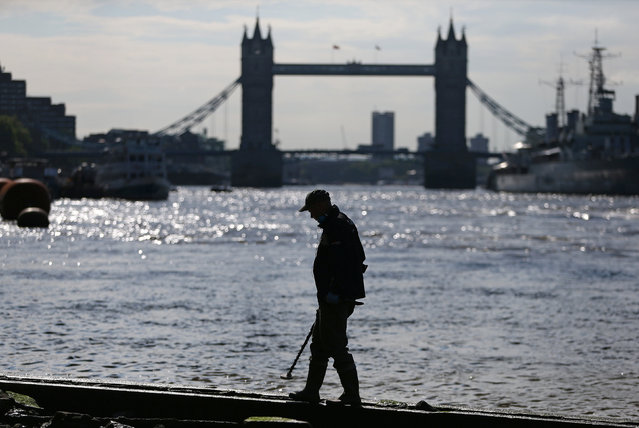
Mudlark Matthew Goode uses a metal detector to look for objects near Tower Bridge on the bank of the River Thames in London, Britain May 23, 2016. (Photo by Neil Hall/Reuters)
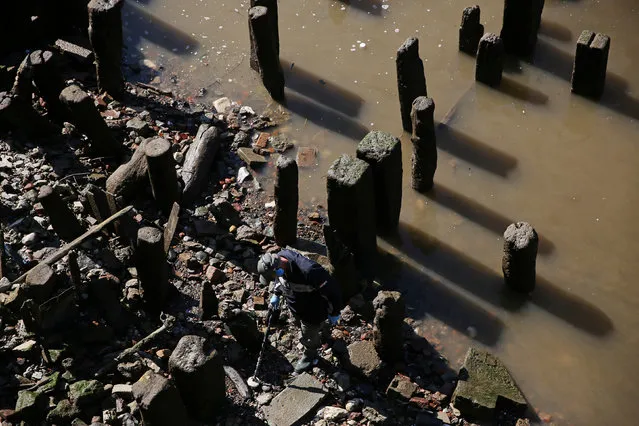
Mudlark Matthew Goode looks for objects on the banks of the River Thames in London, Britain May 23, 2016. (Photo by Neil Hall/Reuters)
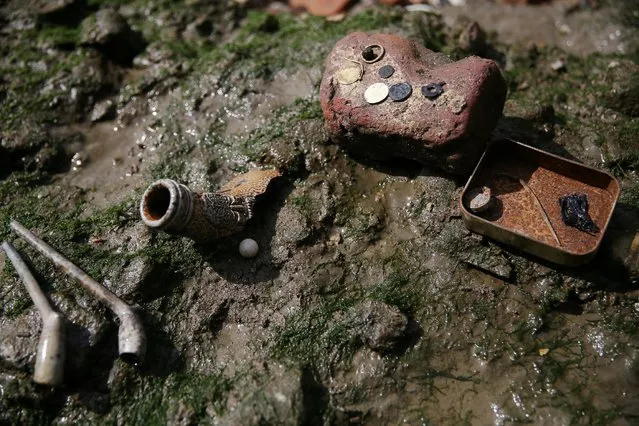
Objects recently excavated by mudlarks Andy Johansen and Ian Smith are presented on the bank of the River Thames in London, Britain May 22, 2016. (Photo by Neil Hall/Reuters)
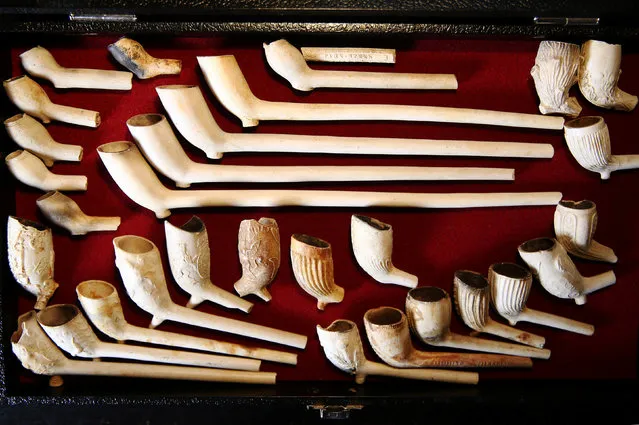
Pipes dating from 1580 to 1900 which have been excavated from the River Thames by mudlark Jason Sandy are displayed at his home in London, Britain June 01, 2016. (Photo by Neil Hall/Reuters)
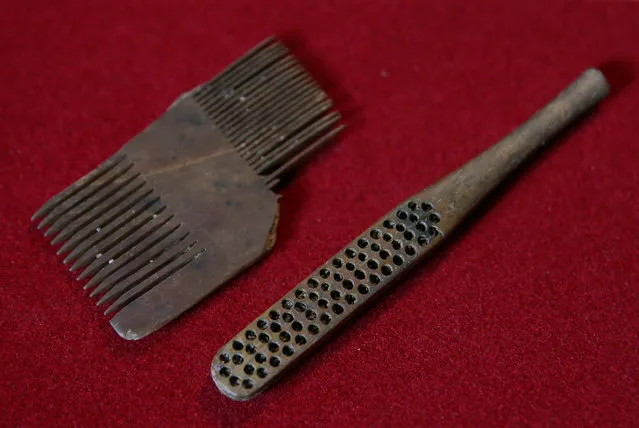
A Tudor comb and a Victorian toothbrush, which were excavated from the River Thames by mudlark Jason Sandy, are displayed at his home in London, Britain June 01, 2016. (Photo by Neil Hall/Reuters)
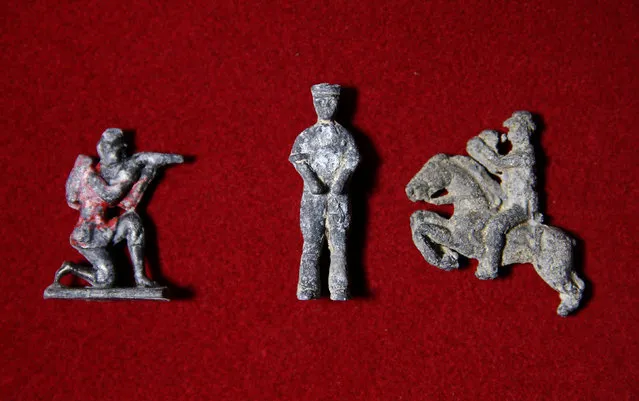
Victorian lead figures excavated from the River Thames by mudlark Jason Sandy are displayed at his home in London, Britain June 01, 2016. (Photo by Neil Hall/Reuters)
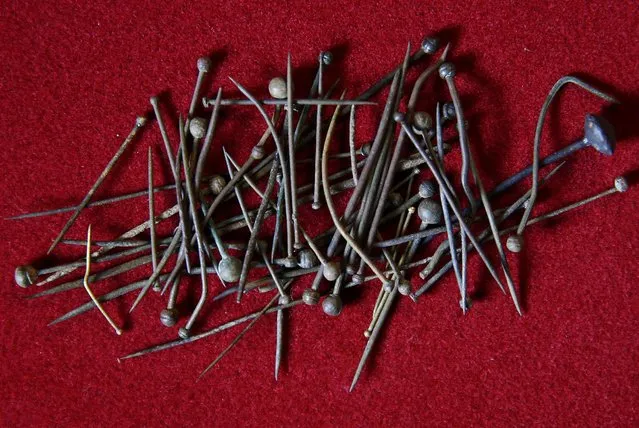
A variety of metal pins which have been excavated from the River Thames by mudlark Jason Sandy are displayed at his home in London, Britain June 01, 2016. (Photo by Neil Hall/Reuters)
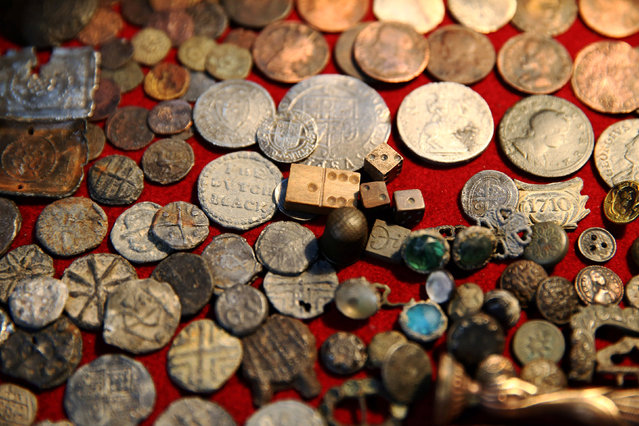
A collection of Tudor coins excavated from the River Thames by mudlark Jason Sandy is displayed at his home in London, Britain June 01, 2016. (Photo by Neil Hall/Reuters)
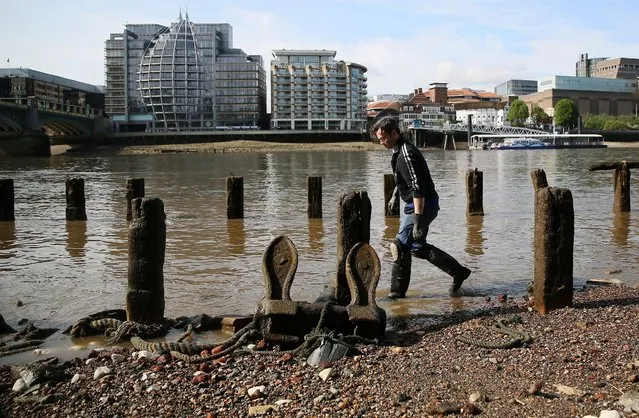
Mudlark Jason Sandy looks for items on the bank of the River Thames in London, Britain May 22, 2016. (Photo by Neil Hall/Reuters)
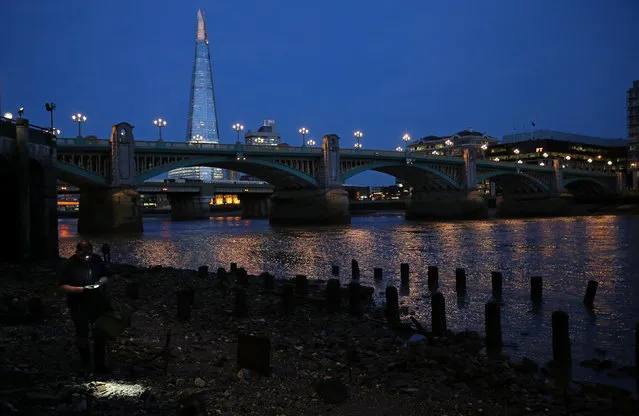
A mudlark uses a head torch to look for objects on the bank of the River Thames in London, Britain June 06, 2016. (Photo by Neil Hall/Reuters)
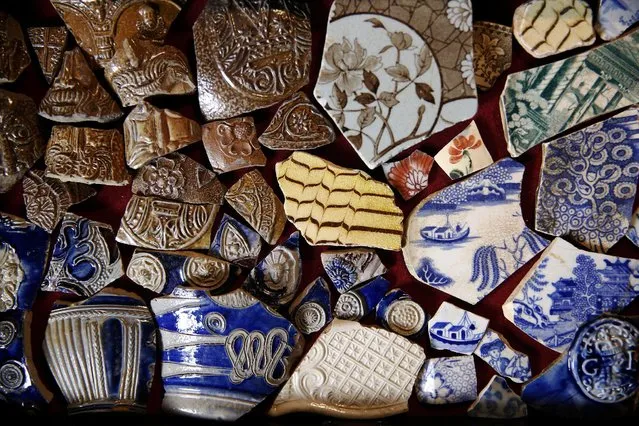
A variety of ceramic objects which have been excavated from the River Thames by mudlark Jason Sandy are displayed at his home in London, Britain June 01, 2016. (Photo by Neil Hall/Reuters)
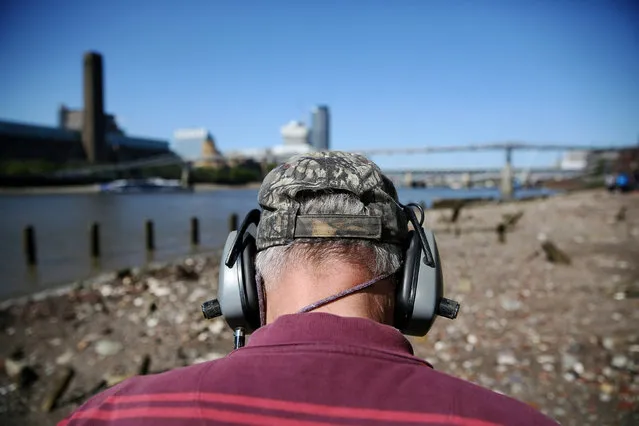
Mudlark Malcolm “Mack” Macduff looks for objects on the banks of the River Thames in London, Britain May 24, 2016. (Photo by Neil Hall/Reuters)
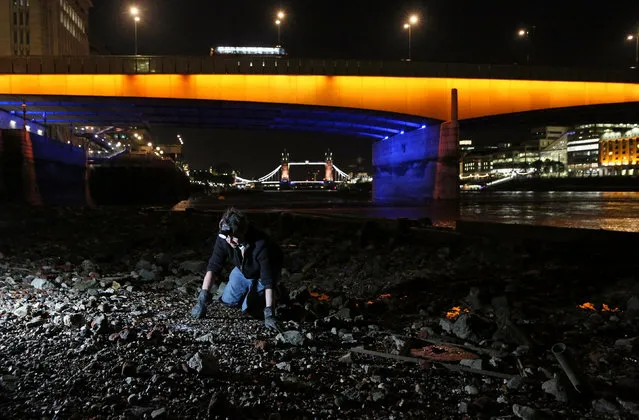
A mudlark uses a torch to look for objects under London Bridge on the bank of the River Thames in London, Britain June 06, 2016. (Photo by Neil Hall/Reuters)
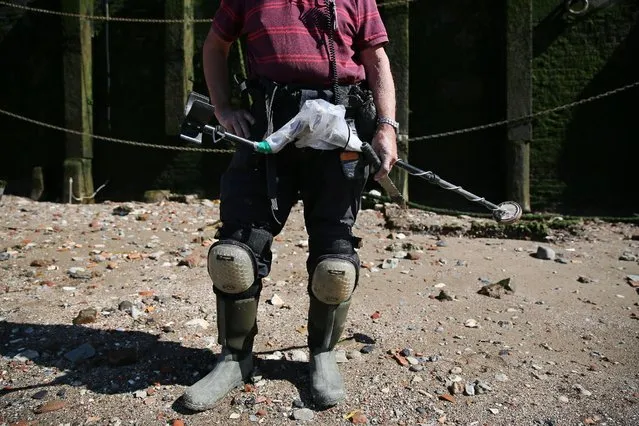
Mudlark Malcolm “Mack” Macduff looks for objects on the banks of the River Thames in London, Britain May 24, 2016. (Photo by Neil Hall/Reuters)
27 Aug 2016 10:43:00,
post received
0 comments
